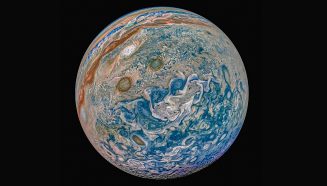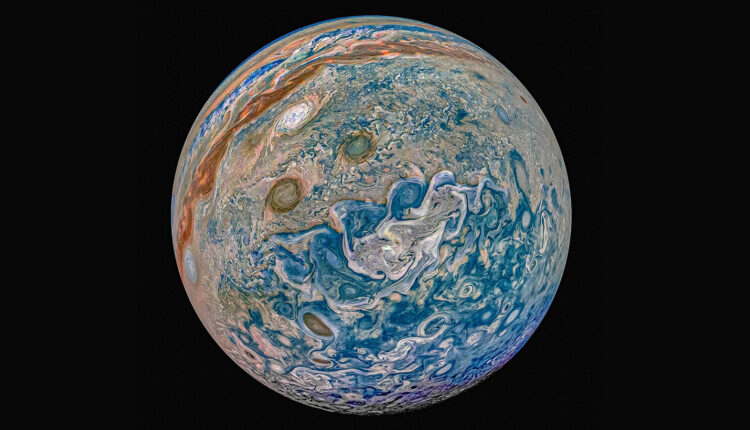
Sprinkles of helium rain may fall on Jupiter.
At pressures and temperatures present within the gas giant, the hydrogen and helium that make up the bulk of its atmosphere don’t mix, according to laboratory experiments reported in the May 27 Nature. That suggests that deep within Jupiter’s atmosphere, hydrogen and helium separate, with the helium forming droplets that are denser than the hydrogen, causing them to rain down (SN: 4/19/21).
Jupiter’s marbled exterior is pretty familiar territory, but it’s still not clear what happens far below the cloud tops. So researchers designed an experiment to compress hydrogen and helium, reaching pressures nearly 2 million times Earth’s atmospheric pressure and temperatures of thousands of degrees Celsius, akin to inner layers of gas giants.
“We are reproducing the conditions inside the planets,” says physicist Marius Millot of Lawrence Livermore National Laboratory in California.
Millot and colleagues squeezed a mixture of hydrogen and helium between two diamonds and hit the concoction with a powerful laser to compress it even further. As the pressure and temperature increased, the researchers saw an abrupt increase in how reflective the material was. That suggests that helium was separating from the hydrogen, which becomes a liquid metal under these conditions (SN: 8/10/16). At even higher pressures and temperatures, the reflectivity decreased, suggesting that hydrogen and helium began mixing again.
The researchers calculated that hydrogen and helium would separate about 11,000 kilometers below the cloud tops of Jupiter, down to a depth of about 22,000 kilometers.
The results could help scientists explain observations made by spacecraft Galileo (SN: 2/18/02) and Juno (SN: 3/7/18), such as the fact that Jupiter’s outer layers of atmosphere have less helium than expected.


